Type Dessert | ||
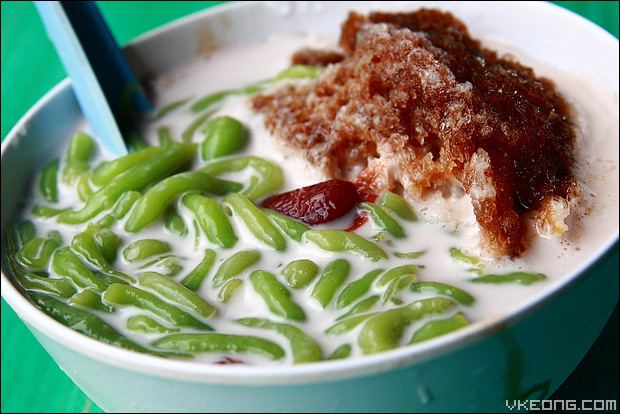 | ||
Similar Laksa, Grass jelly, Rojak, Ais kacang, Palm sugar | ||
Cendol full movie2016
Cendol /ˈtʃɛndɒl/ is a traditional dessert popular in Southeast Asia such as : Indonesia, Malaysia, Singapore, Brunei, Cambodia, East Timor, Vietnam, Thailand and Burma.
Contents
- Cendol full movie2016
- How to make cendol with palm sugar and coconut milk
- Etymology
- Ingredients
- Selling
- References
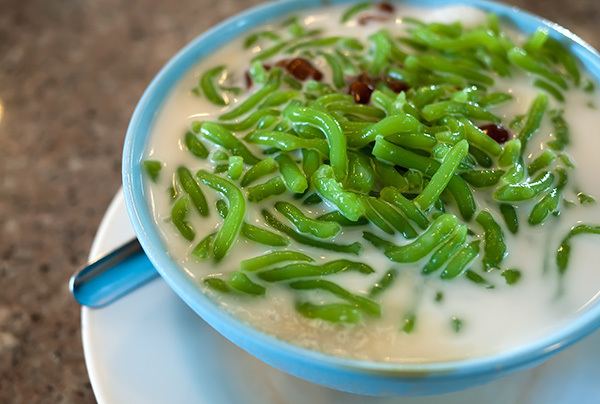
How to make cendol with palm sugar and coconut milk
Etymology
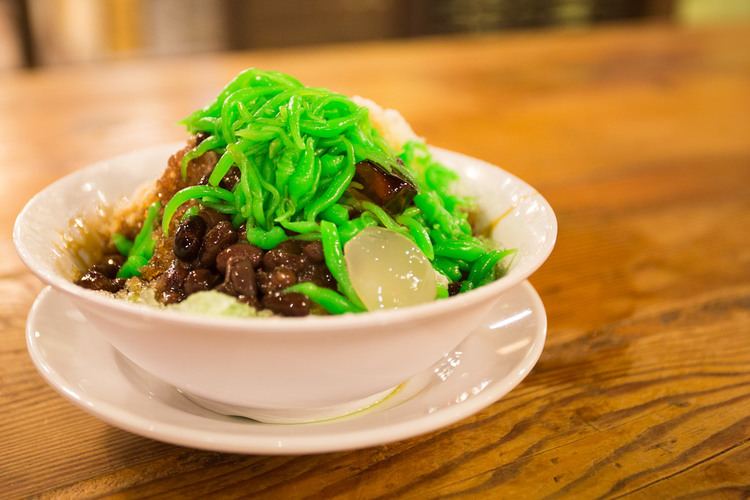
Indonesian dictionary describes cendol as a snack made from rice flour and other ingredients that are formed by filters, then mixed with palm sugar and coconut milk (for beverage). There is a popular belief in Indonesia that the name "cendol" is related to, and originated from, the word jendol, in reference to the swollen green worm-like rice flour jelly; in Javanese, Sundanese, Indonesian and Malay, jendol means "bump," "bulge," or "swollen." In most parts of Indonesia, cendol refer to the green rice flour jelly; while the concoction of that green rice flour jellies with coconut milk, shaved ice, areca palm sugar and sometimes diced jackfruit is called es cendol or dawet (in Central and East Java).
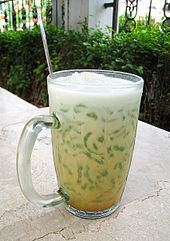
In Vietnam, this worm-like rice flour concoction is called bánh lọt or "fall through cake". Bánh lọt is a common ingredient in a Vietnamese dessert drink called chè, or more commonly chè ba màu. In Thailand it is called lot chong (Thai: ลอดช่อง, pronounced [lɔ̂ːt t͡ɕʰɔ̂ŋ]) which can be translated as "gone through a hole", indicating the way it is made by pressing the warm dough through a sieve into a container of cold water. In Burma it is known as mont let saung or မုန့်လက်ဆောင်း. In Cambodia, it is known as lot.
Ingredients

The dessert's basic ingredients are coconut milk, jelly noodles made from rice flour with green food coloring (usually derived from the pandan leaf), shaved ice and palm sugar. Other ingredients such as red beans, glutinous rice, grass jelly, creamed corn, might also be included.

In Sunda, Indonesia, cendol is a dark-green pulpy dish of rice (or sago) flour worms with coconut milk and syrup of areca sugar. It used to be served without ice. In Javanese, cendol refers to the green jelly-like part of the beverage, while the combination of cendol, palm sugar and coconut milk is called dawet. The most famous variant of Javanese es dawet is from Banjarnegara, Central Java. Today, iced cendol might be served with additional toppings; such as diced jackfruit, durian flesh, and chocolate condensed milk are popular in Indonesia.
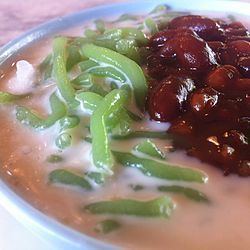
The influence of Singapore and the West has given rise to different variations of cendol, such as cendol with vanilla ice-cream or topped with durian.
Selling
Cendol has become a quintessential part of cuisine in Southeast Asia and is often sold by vendors at roadsides, hawker centres and food courts. Cendol vendors are almost ubiquitous in Indonesian cities, especially Jakarta, Bandung, and Yogyakarta. Originally cendol or dawet in Java was served without ice, but after the introduction of refrigeration technology, the cold cendol with shaved ice (es serut) was available and widely popular. It is possible that each country developed its own recipes once ice became readily available. This explains why it is most popular in Malayan port cities such as Malacca, Penang and Kuala Lumpur where British refrigerated ships' technology would provide the required ice. Cendol has been declared a Malaysian heritage food by the Malaysian Department of National Heritage.
In Indonesia and Malaysia, cendol is commonly sold on the roadside by vendors. It is even dessert fare in Singapore, found in dessert stalls, food centres, coffee shops and food courts.
